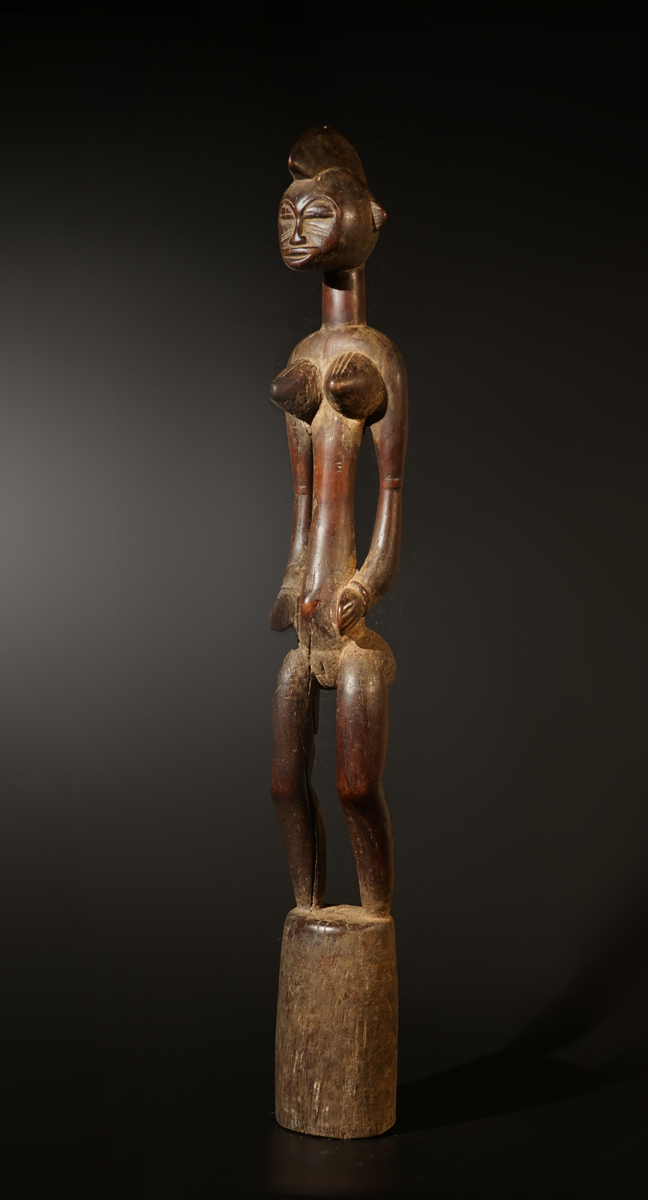 |
 A female Senufo Rhythmpounder, called Déblé, Northern Ivory Coast, coming from the Korhogo region, of the village Diamtènè round about 40 km from the city of Korhogo.
This type of sculptures - kown under the name Déblé - is one of the most famous works of West African Art. After the early 1960th, when the Massa-movement destroyed most of the important Senufo objects, only a few old, authentic Rhythm Pounder were saved and came to Western world. There are no sculptures from the time before 1960 existing anymore in the Senufo region of Ivory Coast, Burkina and Mali. But in some rural regions the old animistic tradition is still existing and also the funeral ceremonies, in which the Déblé rhythm pounder has it's ritual function. There are differences in the ceremonies in comparison to the years before 1960. In particular the holy groves, doesn´t exist anymore or arn't known by Western ethnologists. It were secret fields, where the Senufo placed their ritual sculptures in the forest.These precious objects would probably be stolen immediately, because in nearly every village the Islamic influence becomes stronger and there are more people, who are against the old animistic tradition than decades before. Now these objects are protected in huts close to the village. After the 1960th most of these most important figures of the Senufo were protected in huts of the villages to protect them from theft. We are happy to offer some of these protected sculptures, which have a longlasting ritual use and can be located exactly of the village, were they are coming from.
Gottschalk Burkhard, "Senufo, Massa und die Statuen des poro", Glaze Anita J. , "Art and Death in a Senufo Village", Indiana University Press, Bloomington 1981, Goldwater Robert, "Senufo Sculpture from West Africa" - The Museum of Primitive Art New York, 1964.
reserved
Height: 120 cm
Weight: 7,5 kg
|
 photo: wolfgang-jaenicke.com, for more information, please write us an e-mail with the identification number of the photo identification no. FSA03360.jpg
photo: wolfgang-jaenicke.com, for more information, please write us an e-mail with the identification number of the photo identification no. FSA03360.jpg |
|
